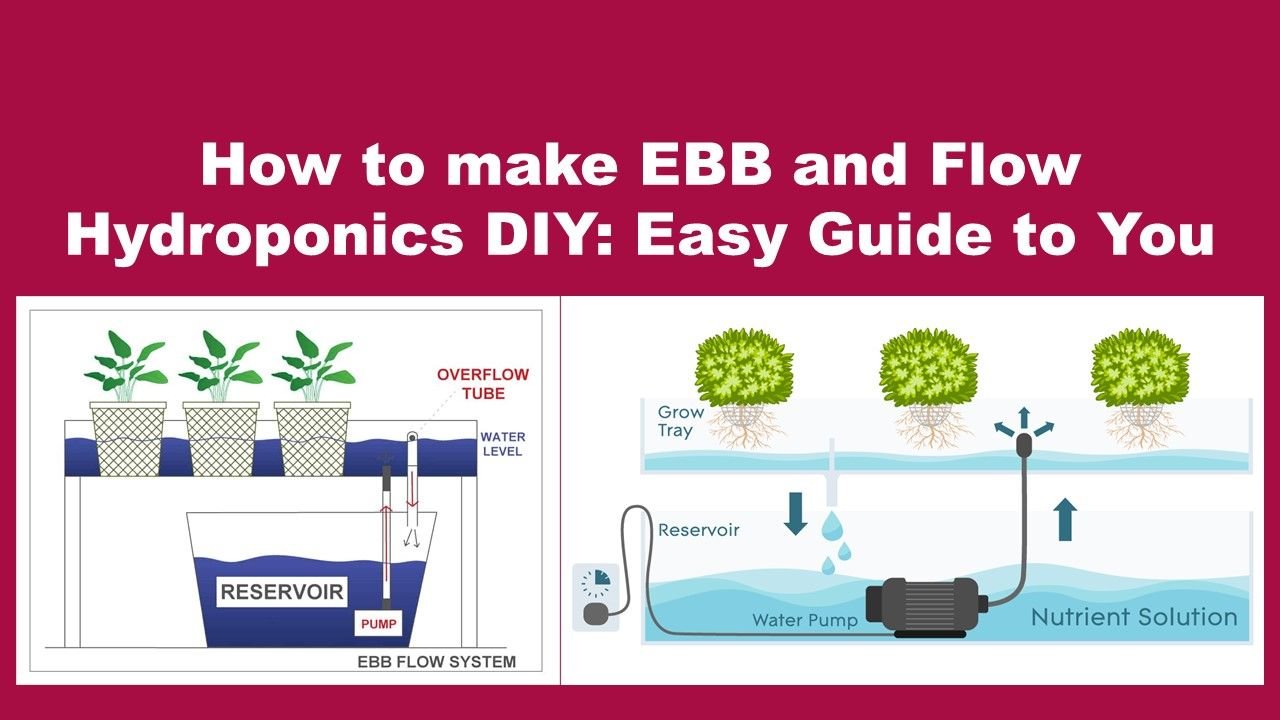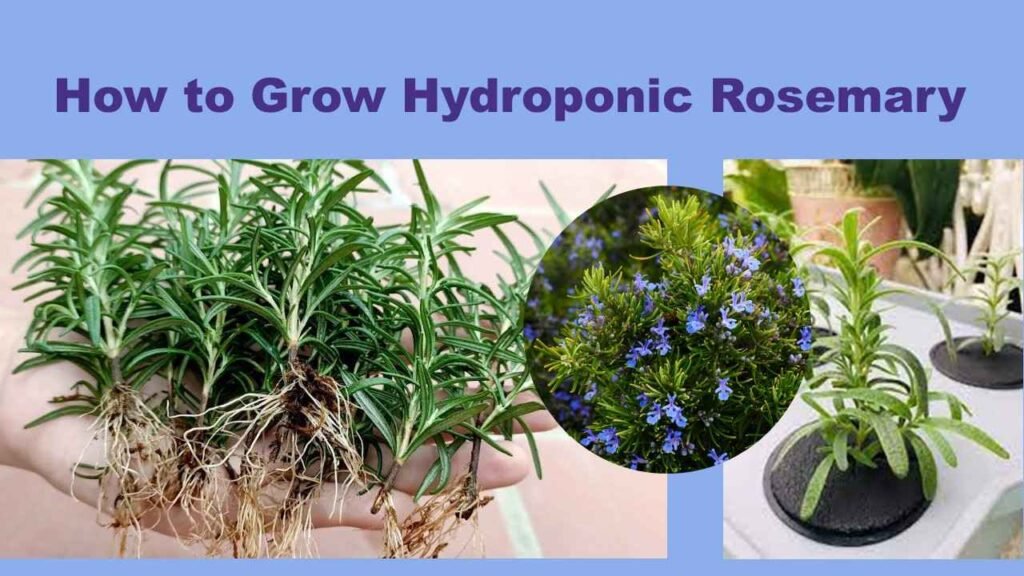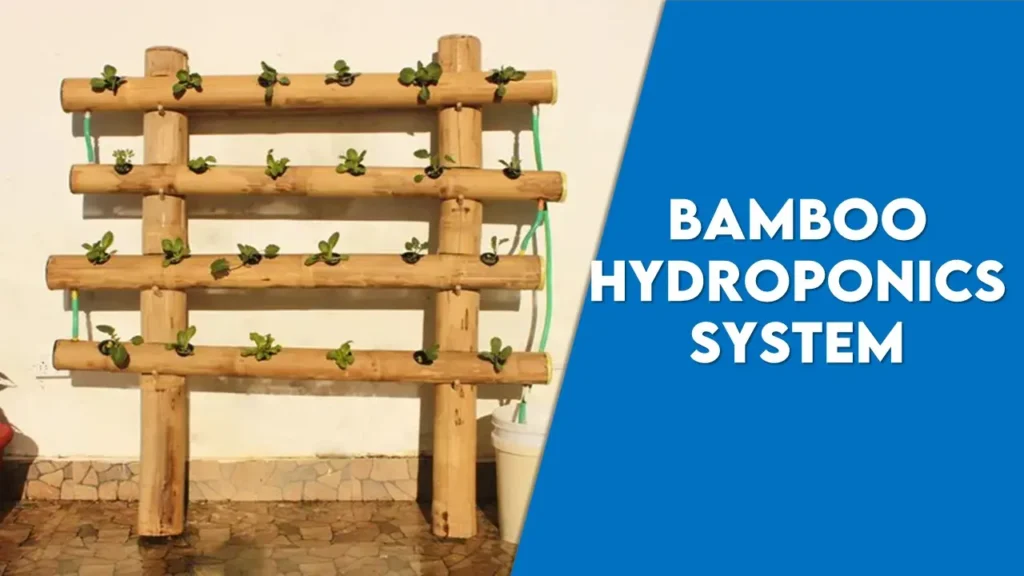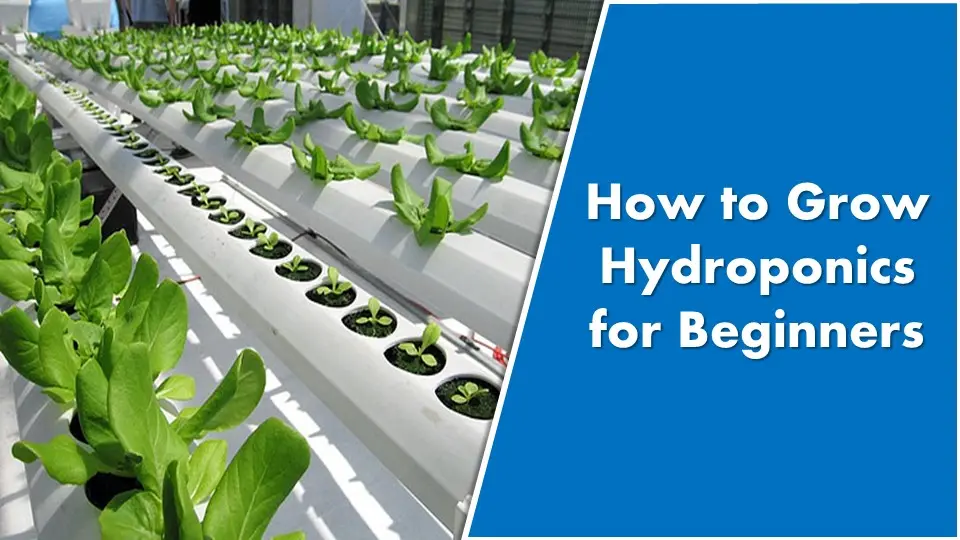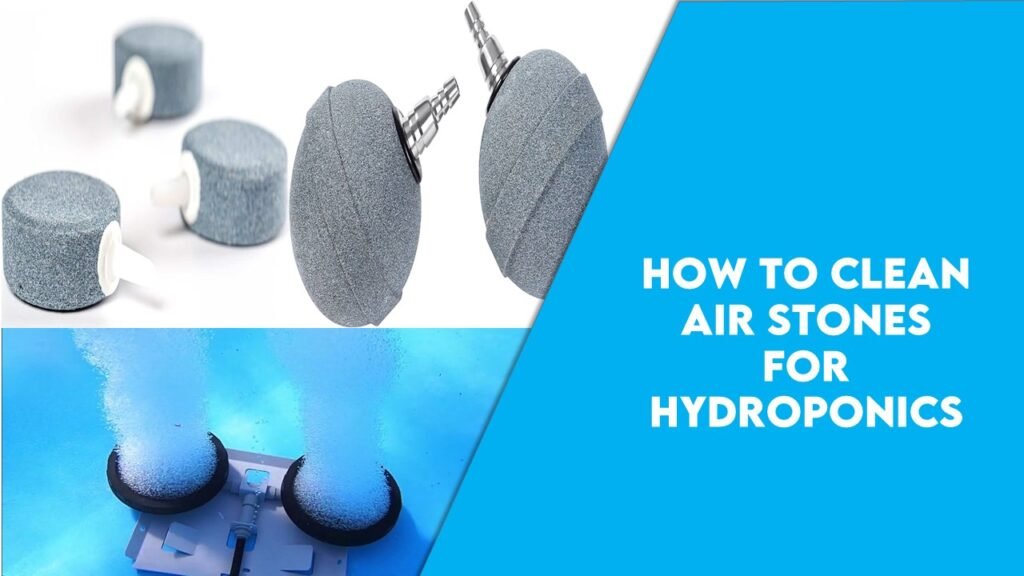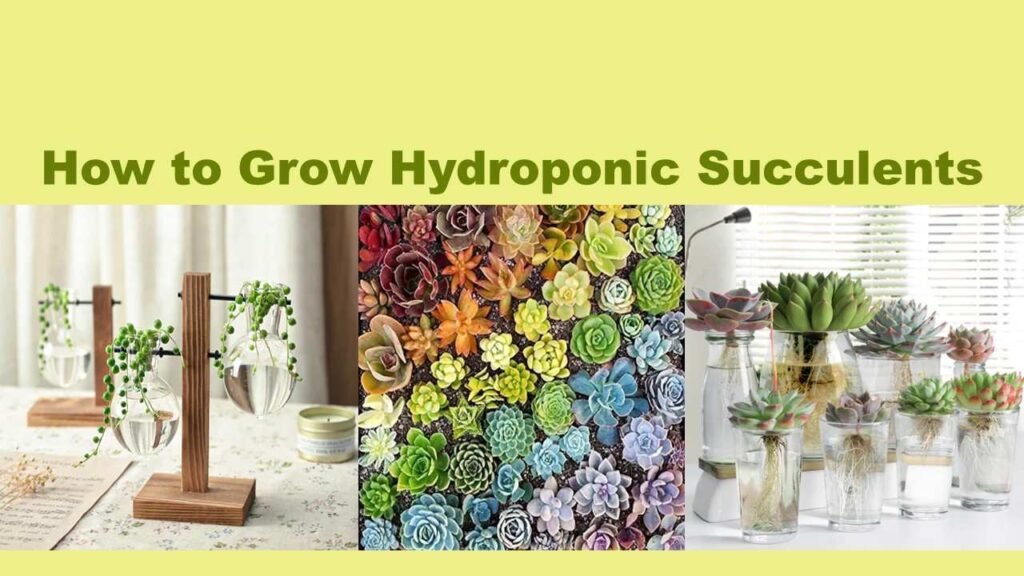How to make EBB and Flow Hydroponics DIY: Easy Guide to You
In the scenario of rapidly growing human populations and changing climate, the world needs uniform nutrient-rich produce. The hydroponic system can meet all these needs so it is gaining popularity among the cultivars. Hydroponic refers to the practice of growing plants in nutrient-rich media, produces higher yield in a very short time, and uses less space. The future of agriculture is well supported by the implementation of a hydroponic system in a sustainable way.

Different types of hydroponic systems are there, like nutrient film technique (provide a shallow stream of water dissolving all the required nutrients directly to the plant roots ), ebb and flow hydroponic method( periodic flooding and draining of plant roots with nutrient-rich media with the help of a pump), deep water culture(immersing plant roots in a well oxygenated nutrient rich media ) etc. In this article we are going to discuss about ebb and flow hydroponics DIY very precisely.
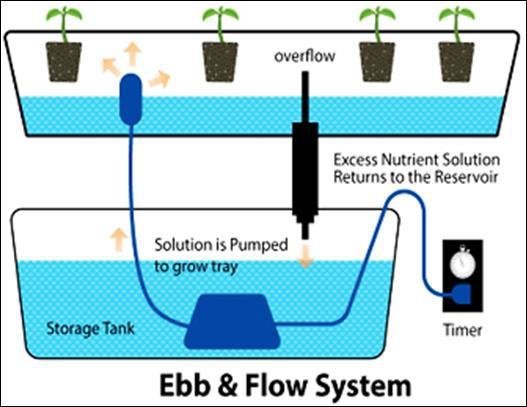
Working Mechanism of Ebb And Flow Hydroponics DIY:
The ebb and flow hydroponics DIY, commonly known as the flood and drain system, derives its name from the distinctive working process it entails. It is a cyclical process which includes –
- At first nutrient enriched water is pumped up from the reservoir with the help of a pump until the pump timer is turned off .
- The growing tray with all nursery pots is allowed to flood with nutrient enriched water.
- After that it is allowed to drain through the supply line and back into the reservoir.
- This inflow and outflow system is very efficient for hydroponic systems as it prevents water stagnation, also supplies all required nutrients to the plants and also provides aeration in the root system.
It is very easy, interesting to build ebb and flow hydroponics DIY and for increasing the yield of your garden produce.
Materials Required to Build An Ebb and Flow Hydroponics DIY:
Reservoir:
Used to store nutrient rich solutions. Transparent reservoir tank is more suitable due to proper light supply into nutrient solution. Water with nutrient solution is reused from this tank with the help of a drain tube.
Submersible Water Pump:
Submersible water pump is used to pump the water into the growing tray and ensure the continuous flow of water.
Overflow Tube:
It is useful to prevent overfilling and to maintain proper nutrient solution level, ensuring the roots are getting sufficient oxygen during the draining phase. It is connected to the growing tray.
Growing Tray:
Growing tray is a container where nursery trays are placed. Growing tray is connected with a flooding pipe and drain tube.
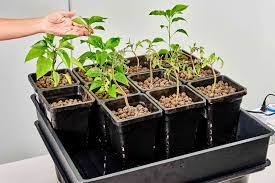
Timer:
It is a very important element in ebb and flow hydroponics DIY that regulates the frequency of flooding cycles. It depends on type of plants, humidity level, plant size for setting the time in ebb and flow hydroponics DIY to maintain cycling process.
PVC Pipe Lines And Glue, Seal Tape, Reducer etc.:
These are Necessary to make a proper water line. It provides the main structure to build ebb and flow hydroponic DIY.
pH Testing Kit:
It is used to test pH. Maintaining Proper pH is very important for a hydroponic setup. Mainly 5.5-6.5 pH range is required in hydroponic systems.
Growing Medium:
Clay pebbles, perlite, hydroton, coco coir, rock-wool etc. are used as growing media that supports the plant roots. These are very useful because they prevent stagnation of water while providing proper moisture in the root zone.
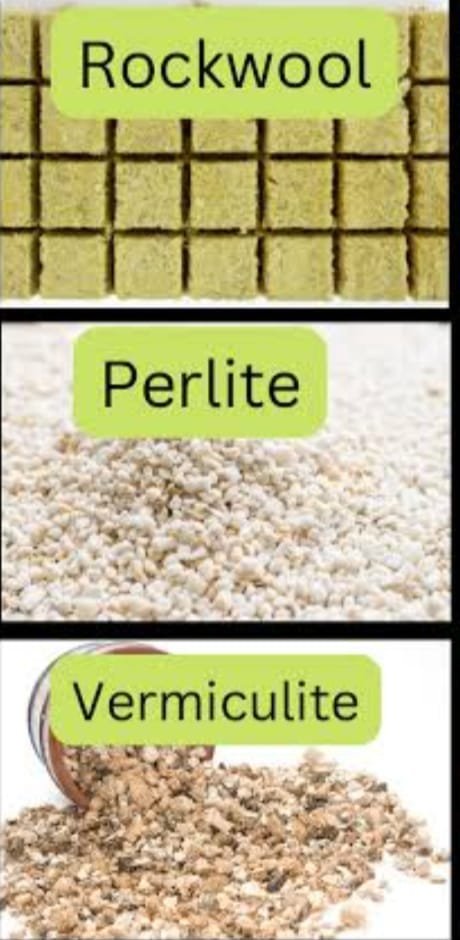
Nutrient Solution:
It varies from crop to crop and provides proper growth and development for the plant. A nutrient enriched water solution that fulfills the plants need for healthy growth.
Growing Light:
It is optional, used to provide optimum light if it is not sufficient. Mainly LED lights are used because it consumes less energy and produce bright light.
How to Set up Ebb & Flow Hydroponic System
The ebb and flow hydroponic system which is also known as flood and drain system, is a very classic and easy technique to set up. The process is economical, low cost, farmers friendly, as well as very easy to understand, build, and maintain. It is a very versatile technique because it can accommodate any size of pot as per the requirement. The set up can be established at any place as per the availability. The detail process is discussed below-
Detailed Process And Description
Step 1- Design of The System
At first determine the size of the system based on the number of plants and type of plants grown. Then prepare the layout of the system allowing the proper spacing in the system so that the plants will be free to grow and easy operations and maintenance. Ensure proper drainage system when designing.
Step 2- Assemble The Reservoir in The System
It is the container which holds the nutrient solution in the system. It should be strong and durable one so that it can hold the solution in a proper way without any leakage. High quality material should be used.
Step 3- Install Submersible Pump And PVC Pipes in The System
The submersible pump is installed inside the reservoir to maintain the flow of solution and also attach the PVC pipes in the whole system so that the nutrient solution can be reached by each of the plants in the system and the excess solution will not be wasted.
Step 4- Set Up The Growing Tray
The growing trays are placed above the reservoir, ensuring its level. The size of the treys are selected as per the plants chosen. Then make the holes in the trey as per the recommended spacing of the pants. Then fill the trey with suitable growing medium for the plant. The plants can be directly grown in the trey or else we can accommodate growing pots in the holes.
Step 5- Install The Overflow Tube
The overflow tube is attached to the growing trey which will prevent overfilling of the nutrient solution, maintain the proper nutrient level and prevent the wastage of the solution. This also ensures that the plant roots will receive adequate oxygen during the draining phase of the system.
Step 6- Connect The Timer
The operation of the pump is controlled by the timer which is installed in the system. It ensures particular and specific flooding and draining period in the system which will provide specific phase for nutrient absorption and oxygenation for the plants. The timer will be set based on the requirements of the plants.
Step 7- Mix And Monitor The Nutrient Solution
Prepare the nutrient solution by mixing different essential elements based on the plants requirement. Always monitor the pH of the solution using pH meter and change the nutrient level to attain the required pH level. Proper pH level of the solution increase the nutrient absorption by the plant.
Step 8- Install Artificial Light
Light is one of the basic requirements for photosynthesis of plants. In controlled conditions we are installing artificial light for restless photosynthesis as sometimes there can be a lack of natural light. Installation of artificial light ensure the adequate amount of photosynthesis as well as the growth of the plant in the system.
Advantages of Ebb And Flow Hydroponics DIY:
Acceptability:
It is suitable for all types of plants and mechanism is also farmers friendly so that easily accepted by the farmers.
Simplicity:
It is a very simple, flexible, reliable hydroponic system. It requires a very low establishment cost so economically it gives benefit to the farmer.
Reuse of Water And Nutrient Solution:
As it is a closed system, it maintains an efficient water and nutrient use. It uses the extra nutrient solution by the help of overflowing pump which is installed in the growing trey.
Versatility:
We can adjust your setup according to plant type, their size and spacing requirement. So, its versatility range is very high.
High Growth Rate of Plants:
Using this technique the plants can get proper supply of nutrient solution and aeration in the root zone subsequently. It also ensure efficient nutrient uptake, specific time period for nutrient absorption and oxygenation which ensure high growth rate of plants.
Disadvantages of Ebb And Flow Hydroponics DIY :
Keeping Nutrient Solution Cool:
During winter season as the environment temperature is very less so it is difficult to keep nutrient solution cool. For that we need to install artificial heating system which will increase the installation cost of the system.
Spread of Diseases:
Chances of spreading diseases is very high as they use the same nutrient source. A specific nutrient solution solution attract a specific disease causing pathogen.
Algal And Fungal Growth:
If the drainage system become poor there is a possibility of water stuck in some places which may increase the chance of fungal and algal growth in the system. And it reduce the efficiency of the system.
Some Tips for Ebb And Flow Hydroponics DIY:
- Proper maintenance is necessary. Daily observation of the setup, nutrient solution level is necessary to see if it is properly working or not.
- Maintenance of hygiene and clean systems, that will prevent diseases and fungal growth.
- Observe the drainage system of the setup daily basis so that there is no water stagnation condition. Stagnation of water in the system may cause root rotting and infestation of various disease causing pathogen.
- Record the temperature of the system regularly, excess low temperature may affect the flow of the nutrient solution in the system.
- Timer is very important for an ebb and flow hydroponics DIY setup to maintain the frequency of flooding cycle to provide specific time for oxygenation and nutrient absorption properly.
- Maintenance of pH level of nutrient solution to maintain the efficiency of nutrient absorption by the plants is very important for hydroponic crops.
Conclusion:
By understanding the simple basic concept and following the steps of ebb and flow hydroponics DIY we can enjoy a nutrient enriched, cost effective, healthy, space efficient hydroponic produces very easily. Because of its simple setup it will increase interest among enthusiastic gardeners and they will maintain it very easily because of its simplicity and versatility and low set up cost. Both the producer and consumer become benefited by the process as it is a cost effective technique for the farmers and consumers can get constant availability of the fresh vegetables, fruits etc. on season as well as off season.
Join Our Hydroponics Growers Group!
Connect with fellow hydroponics enthusiasts, share your ideas, ask questions, and grow together as a community.
👉 Join WhatsApp Group
